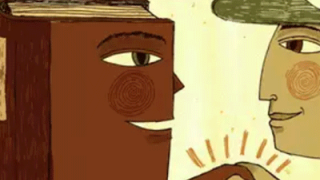MEDIA
How private universities are reviving liberal arts education in India
www.economictimes.com | January 25, 2018
In 2015, India decided to invest more in research universities, liberal arts and social sciences to improve the country's position in global ranking of universities. Indian universities never made it to the top 50 and even the top-ranked Indian institutions appear in low positions.
Many private universities are now addressing the challenge, adapting the globally favoured interdisciplinary model. The vice-chancellor of Ashoka University, Pratap Bhanu Mehta, hopes the focus on liberal arts will help break into better global ranking in 10 years, which is fast track, considering the long gestation and massive investments on research and teaching for a university.
"For the young generation in India, the hook to tap into liberal arts education is not just as a degree or profession but also the need to ask important questions about who they are," Mehta told ET Magazine. Mehta says jobs of the future would be more about basic reasoning skills and abilities that make one stand out in the market rather than content.
"The focus is now shifting to how good you are with reasoning, mathematical skills and writing skills — with these you can do any job well regardless of what content you are taught. The feedback we are getting about our students is that they stand out at their workplace, can solve a lot of problems and understand what questions to ask and have strong interpersonal skills — all attributes of a liberal arts education."
Comprehensive Courses
Pune's FLAME University is also riding the surge of interest in liberal arts and is focussing on interdisciplinary education. FLAME students take up projects that require not only technical skills but also soft skills like communications, leadership and teamwork along with sports, academic writing, ethics and environmental studies. "We are also aware of the need to align our courses and curriculum to the needs and demands of the market," says Dr Devi Singh, the vicechancellor of FLAME.

"I took a course in history and another about the impact of animals on international relations and their economic outcome," says Ishita Gupta, a third-year honours student in economics at Ashoka University. The minor subjects, she feels, strengthen her economics major studies, something she wouldn't have found at other universities.
Anahita Sachdev, a final year undergrad student at FLAME,had English and philosophy as her first choice when she was scouting around after schooling in Chandigarh. She chose literary and culture study as her major and film and TV as her minor. "The interdisciplinary approach to education has opened up multiple career opportunities for me, including TV and film production, publishing, research and journalism," she says.
Sachdev, who is on a 20% scholarship, has already done internships at Sahaayta Cancer Sahyog, Chandigarh, and Agents of Ishq (Parodevi Pictures), Mumbai. Ahmedabad University offers management, engineering and science programmes but now plans to roll out an integrated liberal education programme in 2019. "For us, undergraduate education is about providing a broad and deep education that is premised on interdisciplinary, experiential and research-based learning," says professor Pankaj Chandra, vice-chancellor, Ahmedabad University.
Arjun Puri, director admission and outreach, Jindal Global University, has been research associate with the Jindal School of Liberal Arts & Humanities, since it was started in 2014 with 20 students. "At 16 or 17, students are too young to decide on a field of study. The new liberal arts colleges in India are offering them interdisciplinary options, including humanities, social sciences, law and maths," he says. Today, JGU has 100 students in the liberal arts school. "Our graduate programme gives the students the opportunity to earn two degrees — one in India and the other from the US — at the end of their course. They have six compulsory internships and the option to work/study abroad," says Puri.
Goa-based entrepreneur Shyamalee Roy chose Ashoka University for her daughter Maya because she wanted to pursue a course in aesthetic artistry. The area of study was not available anywhere else in India and the overseas options were too expensive. However, Roy feels that Ashoka is an elitist institution and touching a limited number of students so far. In defence of Ashoka's collective philanthropy model, Mehta says that on the one hand it is autonomous of state and political interference, and on the other it is also not guided by the commercial interests of any single promoter with a controlling stake.
"At Ashoka we cannot recover the full cost of education and have a $5,000-6,000 cost recovery per student annually, only from those who can afford the fees. While a standard American university would cost around $50,000 a year, in India we can provide it at around $9,000 a year," says Mehta. So far, Ashoka has disbursed Rs 80 crore in financial support to make the campus more socially and economically inclusive.
Aditi Parekh, a junior associate at education research consultancy Evaldesign, graduated from Ambedkar University, Delhi. "One of the best features of the liberal arts structure is that it is designed to help you discover different disciplines, and gives you the option to shape your courses based on emerging interests," says Parekh, who moved to sociology, economics and mathematics from history and psychology.

